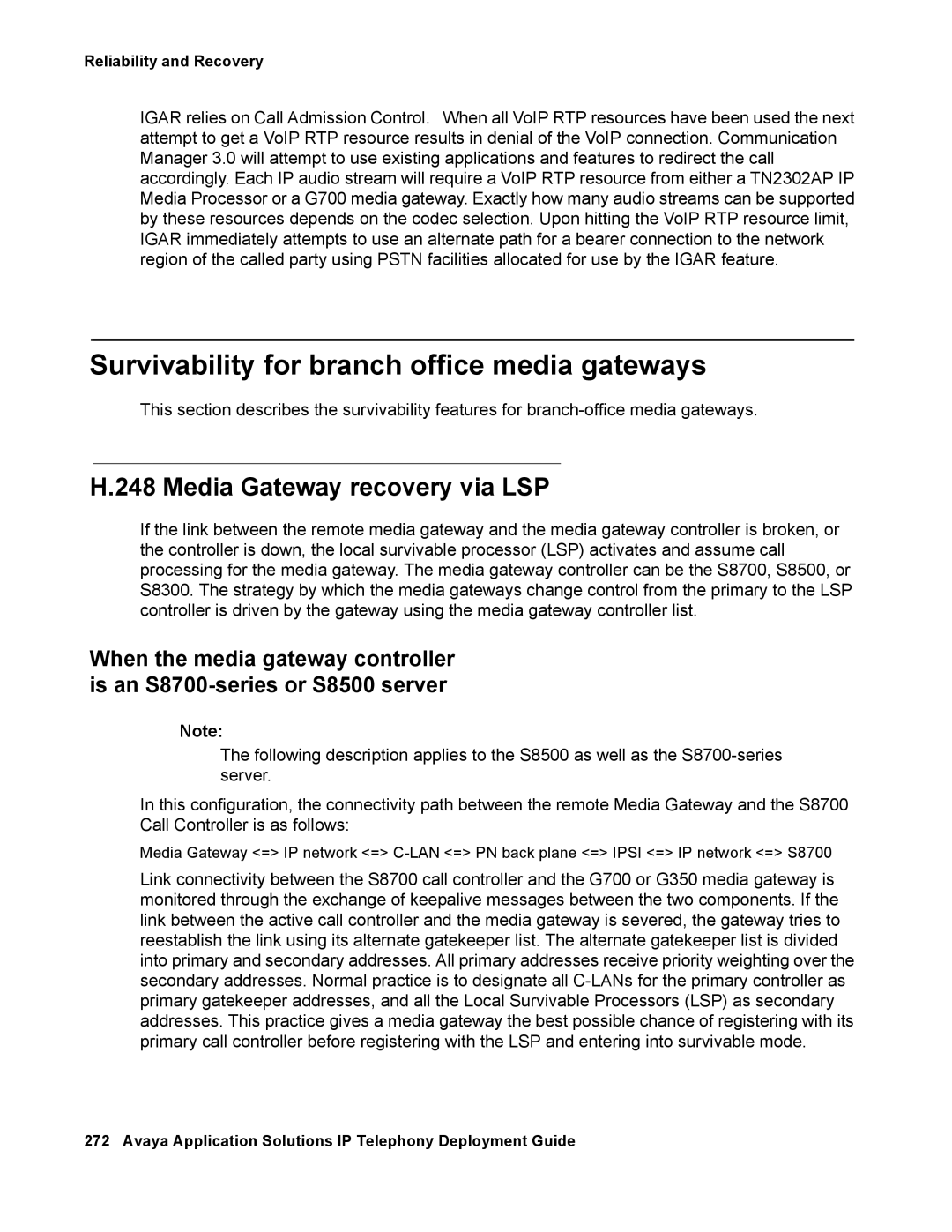
Reliability and Recovery
IGAR relies on Call Admission Control. When all VoIP RTP resources have been used the next attempt to get a VoIP RTP resource results in denial of the VoIP connection. Communication Manager 3.0 will attempt to use existing applications and features to redirect the call accordingly. Each IP audio stream will require a VoIP RTP resource from either a TN2302AP IP Media Processor or a G700 media gateway. Exactly how many audio streams can be supported by these resources depends on the codec selection. Upon hitting the VoIP RTP resource limit, IGAR immediately attempts to use an alternate path for a bearer connection to the network region of the called party using PSTN facilities allocated for use by the IGAR feature.
Survivability for branch office media gateways
This section describes the survivability features for
H.248 Media Gateway recovery via LSP
If the link between the remote media gateway and the media gateway controller is broken, or the controller is down, the local survivable processor (LSP) activates and assume call processing for the media gateway. The media gateway controller can be the S8700, S8500, or S8300. The strategy by which the media gateways change control from the primary to the LSP controller is driven by the gateway using the media gateway controller list.
When the media gateway controller is an
Note:
The following description applies to the S8500 as well as the
In this configuration, the connectivity path between the remote Media Gateway and the S8700 Call Controller is as follows:
Media Gateway <=> IP network <=>
Link connectivity between the S8700 call controller and the G700 or G350 media gateway is monitored through the exchange of keepalive messages between the two components. If the link between the active call controller and the media gateway is severed, the gateway tries to reestablish the link using its alternate gatekeeper list. The alternate gatekeeper list is divided into primary and secondary addresses. All primary addresses receive priority weighting over the secondary addresses. Normal practice is to designate all
